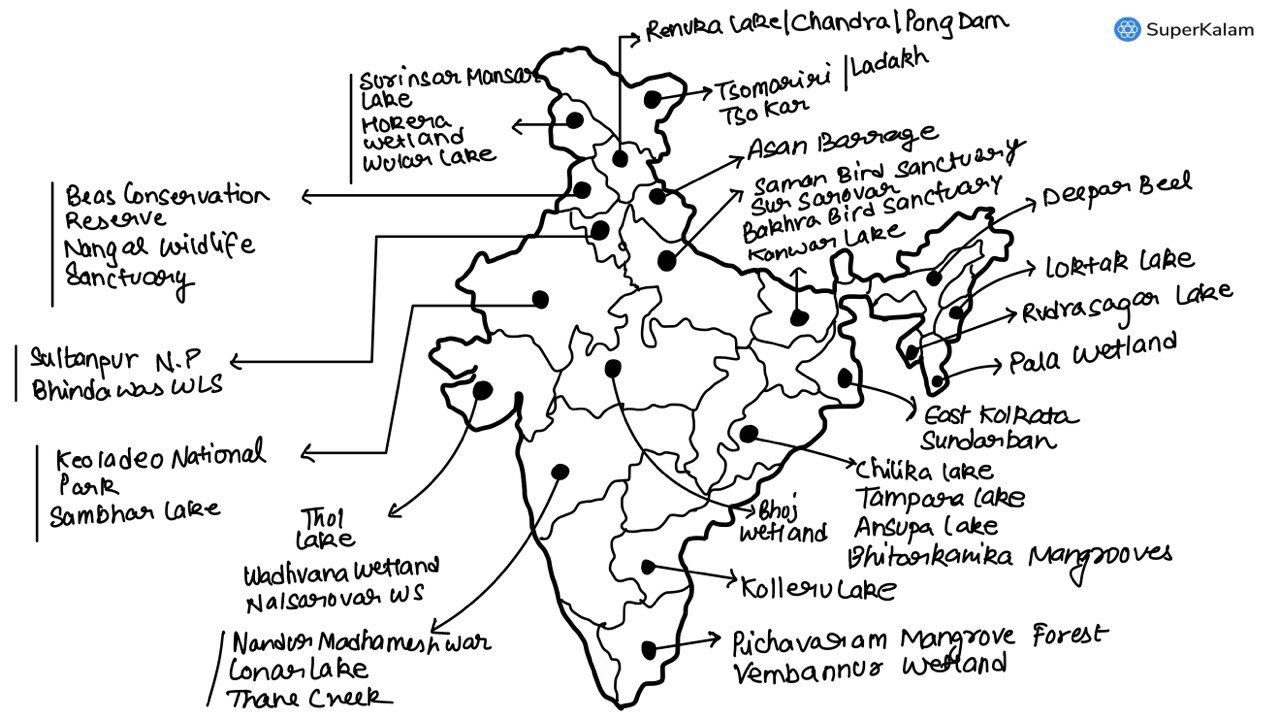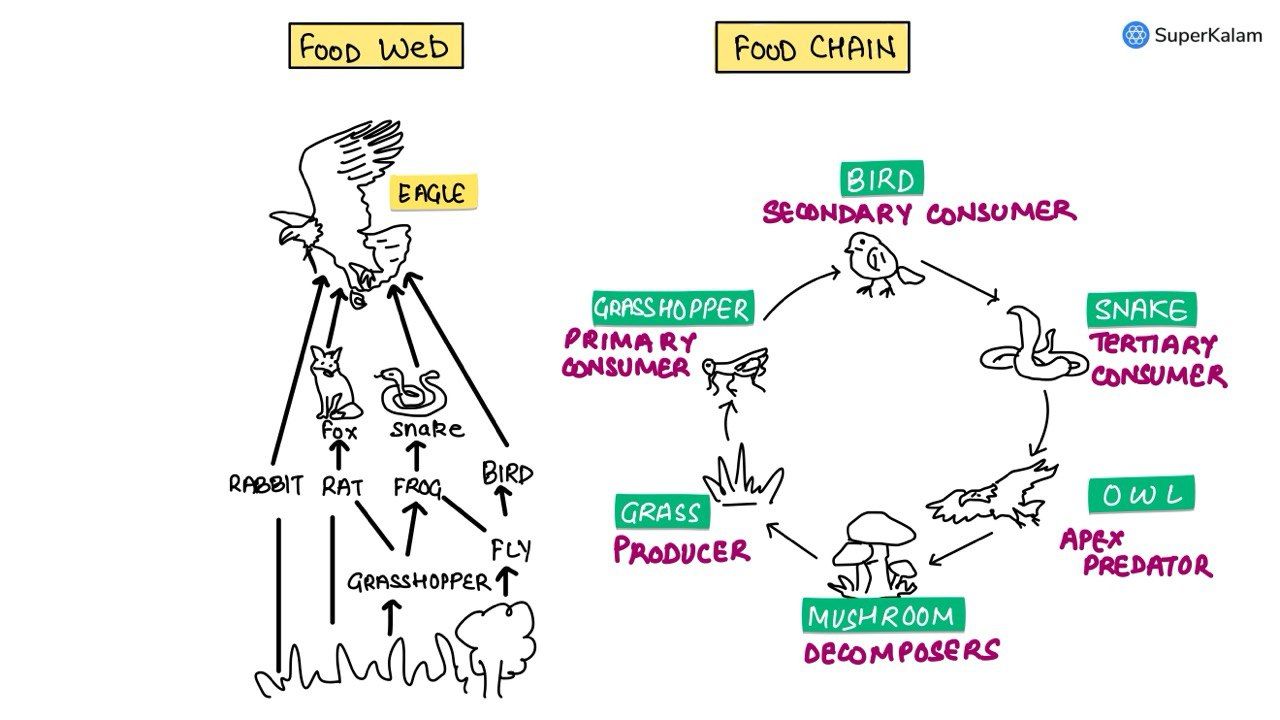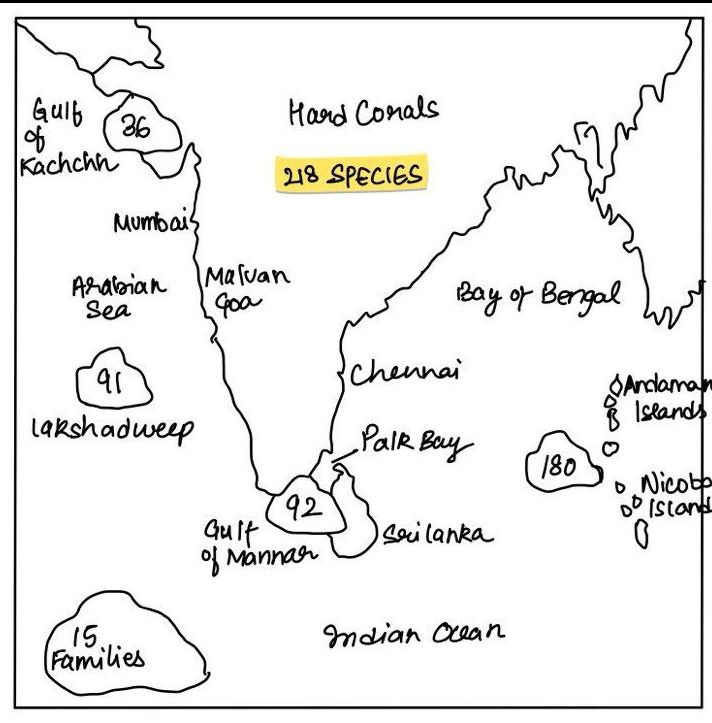UPSC Prelims 2014 Analysis
Subject-Wise MCQ Distribution
- Economy (12 Questions): Covered economic growth indicators, fiscal policy, and banking. Questions were evenly split between static concepts and current affairs, requiring a strong grasp of government schemes and financial policies.
- Environment & Ecology (28 Questions): A major section, focusing on biodiversity, conservation policies, and climate change. Many questions demanded an interdisciplinary approach, linking geography, science, and governance.
- Indian Polity (10 Questions): Tested constitutional provisions, governance structures, and legal frameworks. Several questions required conceptual clarity over rote memorization.
- Modern History (5 Questions): Covered the freedom struggle, key personalities, and national movements. A mix of match the following and direct factual questions were asked.
- Science & Technology (11 Questions): Included topics on biotechnology, space technology, and applied sciences. Many questions required linking current affairs with static concepts, testing awareness of recent advancements.
- Art & Culture (15 Questions): Had a higher-than-usual weightage, emphasizing Buddhism, tribal culture, architecture, and performing arts. Required a detailed understanding of cultural heritage and traditions.
- International Relations (4 Questions): Covered global organizations, treaties, and India’s diplomatic engagements. Most questions were current affairs-driven, requiring knowledge of recent geopolitical developments.
- Medieval History (1 Question): Only one question appeared, focusing on administration in medieval India.
- Geography (Indian Geography: 8, Physical Geography: 1, World Geography: 3): A balanced mix, with emphasis on Indian geography and geophysical phenomena. Many questions included maps, requiring location-based knowledge.

Difficulty Analysis
- Medium Questions (49 Questions): The largest category, demanding a blend of factual knowledge and analytical reasoning. Found in Economy, Polity, and Science & Technology.
- Hard Questions (26 Questions): Required deep conceptual understanding, often framed in multi-statement formats. Common in Environment, Science & Technology, and International Relations.
- Easy Questions (25 Questions): Mostly from History and Polity, with straightforward factual recall. Provided scoring opportunities for well-prepared candidates.

Variations in Question Framing
- Multi-Statement Questions (64%) – Dominant in Polity, Economy, and Environment. Required careful reading, logical deduction, and elimination skills. Many were tricky due to wordplay, making conceptual clarity crucial.
- Direct Questions (36%) – Focused on factual recall, primarily in History and Geography. These were easier to answer for candidates with strong static knowledge.

Current Affairs vs. Static Questions
- Current Affairs-Driven Questions (40%) – Strong presence in Economy, Science & Technology, and Environment. Required awareness of government schemes, international developments, and technological advances.
- Static Knowledge-Based Questions (60%) – Covered fundamental concepts, particularly in Polity, History, and Geography. This highlights that despite the increasing weightage of current affairs, core syllabus topics remain crucial.
Key Learnings for Future Preparation
- Focus on Conceptual Clarity: The paper emphasized analytical thinking, especially in Polity, Economy, and Environment. A strong foundation is essential.
- Balanced Subject Preparation: No single subject dominated. Candidates must cover all subjects equally to adapt to changing trends.
- Master Elimination Techniques: Many multi-statement questions required logical reasoning. Practicing structured MCQs improves accuracy.
- Static Knowledge is Crucial: While current affairs had a presence, subjects like Polity, History, and Geography remained dominant.
- Practice & Revision Matters: Regular mock tests, PYQs, and revisions are essential for improving speed and accuracy.
Subject-Wise Answer Key
QUESTION 1
Hard
Environment & Ecology
Prelims 2014
With reference to technologies for solar power production, consider the following statements:
- ‘Photovoltaics’ is a technology that generates electricity by direct conversion of light into electricity, while ‘Solar Thermal’ is a technology that utilizes the Sun’s rays to generate heat which is further used in the electricity generation process.
- Photovoltaics generates Alternating Current (AC), while Solar Thermal generates Direct Current (DC).
- India has a manufacturing base for Solar Thermal technology, but not for Photovoltaics.
Which of the statements given above is/are correct?
A. 1 only
B. 2 and 3 only
C. 1, 2 and 3
D. None
QUESTION 2
Medium
Environment & Ecology
Prelims 2014
Which of the following are some important pollutants released by the steel industry in India?
- Oxides of sulphur
- Oxides of nitrogen
- Carbon monoxide
- Carbon dioxide
Select the correct answer using the code given below.
A. 1, 3 and 4 only
B. 2 and 3 only
C. 1 and 4 only
D. 1,2, 3 and 4
QUESTION 3
Medium
Environment & Ecology
Prelims 2014
With reference to a conservation organization called Wetlands International, which of the following statements is/are correct?
- It is an intergovernmental organization formed by the countries which are signatories to the Ramsar Convention.
- It works at the field level to develop and mobilize knowledge, and use the practical experience to advocate for better policies.
Select the correct answer using the code given below.
A. 1 only
B. 2 only
C. Both 1 and 2
D. Neither 1 nor 2
QUESTION 4
Medium
Environment & Ecology
Prelims 2014
There is some concern regarding the nanoparticles of some chemical elements that are used by the industry in the manufacture of various products. Why?
- They can accumulate in the environment, and contaminate water and soil.
- They can enter food chains.
- They can trigger the production of free radicals.
Select the correct answer using the code given below.
A. 1 and 2 only
B. 3 only
C. 1 and 3 only
D. 1, 2 and 3
QUESTION 5
Hard
Environment & Ecology
Prelims 2014
With reference to ‘Global Environment Facility’, which of the following statements is/are correct
A. It serves as financial mechanism for 'Convention on biological diversity' and 'United Nations Framework Convention on Climate Change'
B. It undertakes scientific research on environmental issues at the global level
C. It is an agency under the OECD to facilitate the transfer of technology and funds to underdeveloped countries with
D. Both a and b
QUESTION 6
Medium
Environment & Ecology
Prelims 2014
The scientific view is that the increase in global temperature should not exceed 2 °C above the pre-industrial level. If the global temperature increases beyond 3°C above the pre-industrial level, what can be its possible impact/impacts on the world?
- Terrestrial biosphere tends toward a net carbon source
- Widespread coral mortality will occur.
- All the global wetlands will permanently disappear.
- Cultivation of cereals will not be possible anywhere in the world.
Select the correct answer using the code given below.
A. 1 only
B. 1 and 2 only
C. 2, 3 and 4 only
D. 1, 2, 3 and 4,
QUESTION 7
Medium
Environment & Ecology
Prelims 2014
What is the significance of a practical approach to sugarcane production known as ‘Sustainable Sugarcane Initiative’?
- Seed cost is very low in this compared to the conventional method of cultivation.
- Drip irrigation can be practised very effectively in this.
- There is no application of chemical/ inorganic fertilizers at all in this.
- The scope for intercropping is more in this compared to the conventional method of cultivation.
Select the correct answer using the code given below.
A. 1 and 3 only
B. 1, 2 and 4 only
C. 2, 3 and 4 only
D. 1, 2, 3 and 4
QUESTION 8
Medium
Environment & Ecology
Prelims 2014
Consider the following international agreements:
- The International Treaty on Plant Genetic Resources for Food and Agriculture
- The United Nations Convention to Combat Desertification
- The World Heritage Convention
Which of the above has/have a bearing on the biodiversity?
A. 1 and 2 only
B. 3 only
C. 1 and 3 only
D. 1, 2, and 3
QUESTION 9
Medium
Environment & Ecology
Prelims 2014
Consider the following statements:
- Maize can be used for the production of starch.
- Oil extracted from maize can be a feedstock for biodiesel.
- Alcoholic beverages can be produced by using maize.
Which of the statements given above is/are correct?
A. 1 only
B. 1 and 2 only
C. 2 and 3 only
D. 1, 2 and 3
QUESTION 10
Medium
Environment & Ecology
Prelims 2014
Consider the following statements:
- Animal Welfare Board of India is established under the Environment (Protection) Act, 1986.
- National Tiger Conservation Authority is a statutory body.
- National Ganga River Basin Authority is chaired by the Prime Minister.
Which of the statements given above is/ are correct?
A. 1 only
B. 2 and 3 only
C. 2 only
D. 1, 2 and 3
QUESTION 11
Hard
Environment & Ecology
Prelims 2014
If you walk through the countryside, you are likely to see some birds stalking alongside the cattle to seize the insects, disturbed by their movement through grasses, Which of the following is/are such bird/birds?
- Painted Stork
- Common Myna
- Black-necked Crane
Select the correct answer using the code given below.
A. 1 and 2
B. 2 only
C. 2 and 3
D. 3 only
QUESTION 12
Hard
Environment & Ecology
Prelims 2014
Consider the following pairs
| Wetlands | Confluence of rivers |
|---|---|
| 1. Harike Wetlands | Beas and Satluj/Sutlej |
| 2. Keoladeo Ghana National Park | Banas and Chambal |
| 3. Kolleru Lake | Confluence of Musi and Krishna |
Which of the above pairs is/are correctly matched?
A. 1 only
B. 2 and 3 only
C. 1 and 3 only
D. 1, 2 and 3
QUESTION 13
Hard
Environment & Ecology
Prelims 2014
Every year, a month-long ecologically important campaign/festival is held during which certain communities/tribes plant saplings of fruit-bearing trees. Which of the following are such communities/tribes?
A. Bhutia and Lepcha
B. Gond and Korku
C. lrula and Toda
D. Sahariya and Agariya
QUESTION 14
Hard
Environment & Ecology
Prelims 2014
Which one of the following is the correct sequence of a food chain?
A. Diatoms-Crustaceans-Herrings
B. Crustaceans-Diatoms-Herrings
C. Diatoms-Herrings-Crustaceans
D. Crustaceans-Herrings-Diatoms
QUESTION 15
Medium
Environment & Ecology
Prelims 2014
Which of the following have coral reefs?
- Andaman and Nicobar Islands
- Gulf of Kutch
- Gulf of Mannar
- Sunderbans
Select the correct answer using the code given below.
A. 1, 2 and 3 only
B. 2 and 4 only
C. 1 and 3 only
D. 1, 2, 3 and 4
QUESTION 16
Easy
Environment & Ecology
Prelims 2014
Lichens, which are capable of initiating ecological succession even on a bare rock, are actually a symbiotic association of
A. algae and bacteria
B. algae and fungi
C. bacteria and fungi
D. Fungi and mosses
QUESTION 17
Medium
Environment & Ecology
Prelims 2014
With reference to Bombay Natural History Society (BNHS), consider the following statements :
- It is an autonomous organization under the Ministry of Environment and Forests.
- It strives to conserve nature through action-based research, education and public awareness.
- It organizes and conducts nature trails and camps for the general public.
Which of the statements given above is/are correct?
A. 1 and 3 only
B. 2 only
C. 2 and 3 only
D. 1, 2 and 3
QUESTION 18
Medium
Environment & Ecology
Prelims 2014
Consider the following statements regarding ‘Earth Hour’:
- It is an initiative of UNEP and UNESCO.
- It is a movement in which the participants switch off the lights for one hour on a certain day every year.
- It is a movement to raise awareness about climate change and the need to save the planet.
Which of the statements given above is/are correct?
A. 1 and 3 only
B. 2 only
C. 2 and 3 only.
D. 1, 2 and 3
QUESTION 19
Medium
Environment & Ecology
Prelims 2014
What are the benefits of implementing the ‘Integrated Watershed Development Programme’?
- Prevention of soil runoff
- Linking the country’s perennial rivers with seasonal rivers
- Rainwater harvesting and recharge of the groundwater table
- Regeneration of natural vegetation
Select the correct answer using the code given below.
A. 1 and 2 only
B. 2, 3 and 4 only
C. 1, 3 and 4 only
D. 1, 2, 3 and 4
QUESTION 20
Medium
Environment & Ecology
Prelims 2014
The most important strategy for the conservation of biodiversity together with traditional human life is the establishment of
A. biosphere reserves
B. botanical gardens
C. national parks
D. wildlife sanctuaries
QUESTION 21
Medium
Environment & Ecology
Prelims 2014
If a wetland of international importance is brought under the ‘Montreux Record’, what does it imply?
A. Changes in ecological character have occurred, are occurring or are likely to occur in the wetland as a result of human interference
B. The country in which the wetland is located should enact a law to prohibit any human activity within
C. The survival of the wetland depends on the cultural practices and traditions of certain communities living in its
D. It is given the status of ‘World Heritage Site’
QUESTION 22
Easy
Environment & Ecology
Prelims 2014
Other than poaching, what are the possible reasons for the decline in the population of Ganges River Dolphins?
- Construction of dams and barrages on rivers
- Increase in the population of crocodiles in rivers
- Getting trapped in fishing nets accidentally
- Use of synthetic fertilizers and other agricultural chemicals in crop-fields in the vicinity of rivers
Select the correct answer using the code given below.
A. 1 and 2 only
B. 2 and 3 only
C. 1, 3 and 4 only
D. 1, 2, 3 and 4
QUESTION 23
Medium
Environment & Ecology
Prelims 2014
Brominated flame retardants are used in many household products like mattresses and upholstery. Why is there some concern about their use?
- They are highly resistant to degradation in the environment.
- They are able to accumulate in humans and animals.
Select the correct answer using the code given below.
A. 1 only
B. 2 only
C. Both 1 and 2
D. Neither 1 nor 2
QUESTION 24
Easy
Environment & Ecology
Prelims 2014
Which of the following adds/add carbon dioxide to the carbon cycle on the planet Earth?
- Volcanic action
- Respiration
- Photosynthesis
- The decay of organic matter
Select the correct answer using the code given below.
A. 1 and 3 only
B. 2 only
C. 1, 2 and 4 only
D. 1, 2, 3 and 4
QUESTION 25
Medium
Environment & Ecology
Prelims 2014
With reference to the Neem tree, consider the following statements:
- Neem oil can be used as a pesticide to control the proliferation of some species of insects and mites.
- Neem seeds are used in the manufacture of biofuels and hospital detergents.
- Neem oil has applications in the pharmaceutical industry.
Which of the statements given above is/are correct?
A. 1 and 2 only
B. 3 only
C. 1 and 3 only
D. 1, 2 and 3
QUESTION 26
Medium
Environment & Ecology
Prelims 2014
With reference to ‘Eco-Sensitive Zones’, which of the following statements is/are correct?
- Eco-Sensitive Zones are the areas that are declared under the Wildlife (Protection) Act, 1972.
- The purpose of the declaration of Eco-Sensitive Zones is to prohibit all kinds of human activities, in those zones except agriculture.
Select the correct answer using the code given below.
A. 1 only
B. 2 only
C. Both 1 and 2
D. Neither 1 nor 2
QUESTION 27
Medium
Environment & Ecology
Prelims 2014
In India, the problem of soil erosion is associated with which of the following?
- Terrace cultivation
- Deforestation
- Tropical climate
Select the correct answer using the code given below.
A. 1 and 2 only
B. 2 only
C. 1 and 3 only
D. 1, 2 and 3



